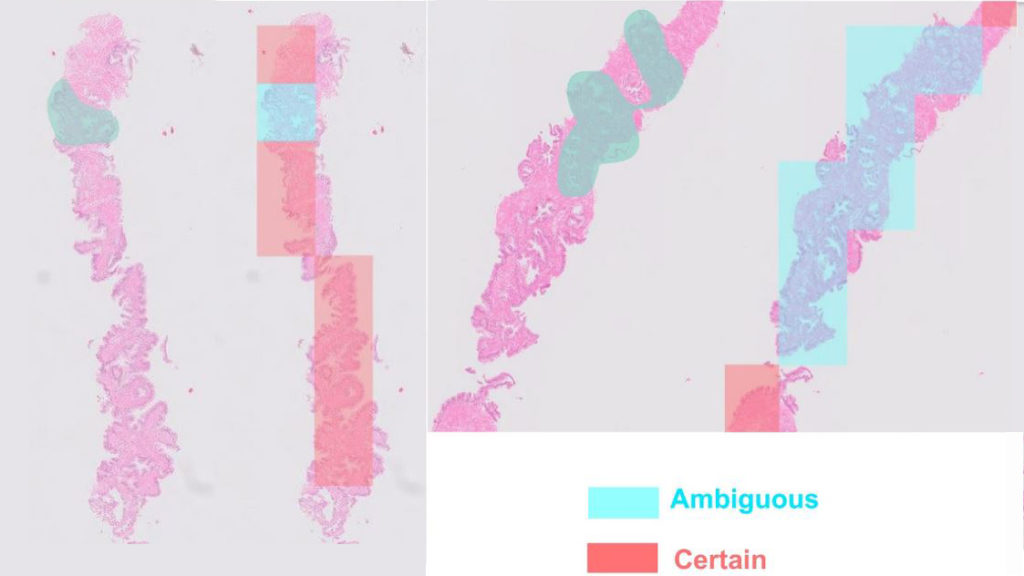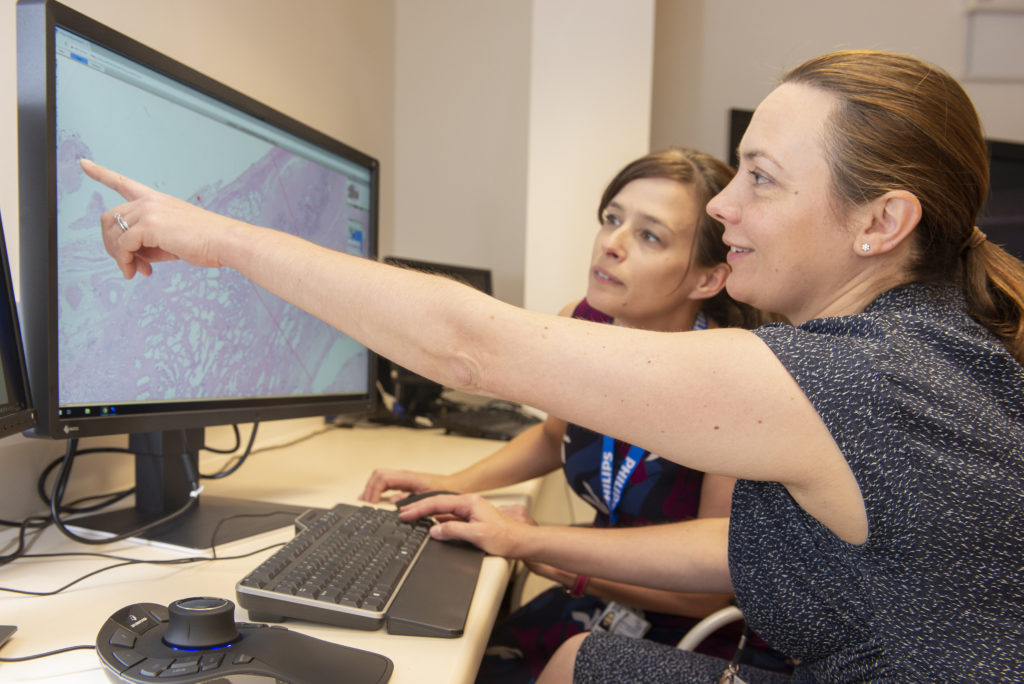A multidisciplinary team comprising University of Oxford academics and Oxford University Hospitals (OUH) pathologists has developed an algorithm that automates requests for additional investigation of diagnostically uncertain prostate biopsies.

The team were supported by the NIHR Oxford BRC through its Molecular Diagnostics and Imaging themes.
Nearly 50,000 cases of prostate cancer are diagnosed each year in the UK. During the diagnostic process, men with suspected prostate cancer undergo a biopsy, which is analysed by pathology services.
The more than 60,000 prostate biopsies performed in the UK annually represents a high workload for pathology teams. Tools that could help streamline this workflow would provide significant time savings and speed up diagnoses.
To confidently diagnose prostate cancer, pathologists need to identify a number of tissue architecture and cellular cues. All biopsies are stained with Hematoxylin & Eosin (H&E), which allows the pathologist to study the size and shape (morphology) of the cells and tissue. However, in 25-50% of cases, H&E staining alone does not provide sufficient evidence for a diagnosis, requiring the additional process of immunohistochemistry (IHC) to study other cellular features.
One bottleneck in the current pathology workflow is the requirement for a pathologist to review the H&E-stained biopsies to determine which require IHC.
To address this need, pathologists Dr Lisa Browning and Professor Clare Verrill of OUH and Dr Richard Colling of the Nuffield Department of Surgical Sciences, teamed up with biomedical image analysts from the University’s Institute of Biomedical Engineering, Big Data Institute and Ludwig Oxford Institute for Cancer Research to take a multidisciplinary approach.
In their paper in the journal Modern Pathology, the team used prostate biopsies annotated by pathologists at OUH to train an artificial intelligence (AI) tool to detect tissue regions with ambiguous morphology and decide which cases needed IHC. The tool agreed with the pathologist’s review in 81% of cases.

By enabling automated request of IHC based on the AI tool results, the pathologist would only need to review the case once all necessary staining had been carried out. This workflow improvement is estimated to save on average 11 minutes of pathologist time for each case, which scales up to 165 pathologist hours for 1,000 prostate biopsies needing IHC.
“The NHS spends £27 million on locum and private services to make up for the shortfall in pathology service provision. By using this AI tool to triage prostate biopsies for IHC, pathologists would spend less time reviewing these cases, which would not only lead to financial savings, but it would also accelerate prostate cancer diagnoses to inform patients and treating clinicians earlier,” Professor Verrill.
The tool will now be developed and validated further using pathology data from different locations to account for variation in IHC requests between pathologist teams and centres. This future work will continue to take advantage of the PathLAKE Centre of Excellence for digital pathology and artificial intelligence, of which Oxford is a member.
This work was supported by PathLAKE via the Industrial Strategy Challenge Fund, managed and delivered by Innovate UK on behalf of UK Research and Innovation (UKRI), the NIHR Oxford Biomedical Centre, the Engineering and Physical Sciences Research Council (EPSRC), the Medical Research Council (MRC) and the Wellcome Trust.